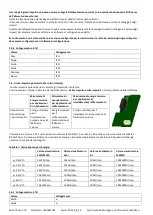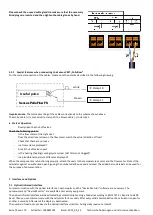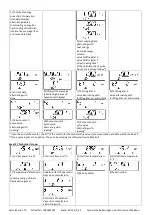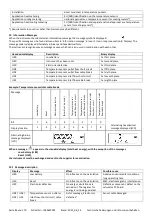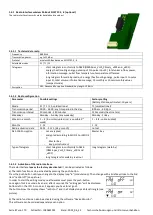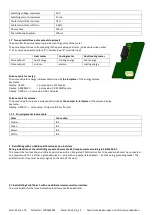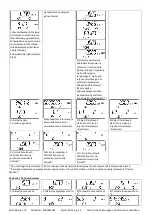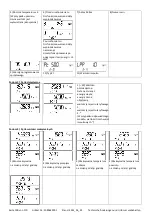
Seite 86 von 170 Artikel Nr.: 1080622001 Stand: 2022_06_24 Technische Änderungen und Irrtümer vorbehalten.
1.2.3 Technical data M-Bus
Primary address
0 (factory setting); 1 - 250 (configurable)
Baud rate
2400; 300
Connecting cable length
1 m
Number of possible read-outs
unlimited
Refresh of data
120 s; using a power pack: 2 s
1.3 Modbus RTU (optional)
The Modbus RTU Module is a galvanically isolated interface for the transmission of meter data (absolute values). It is designed
for use with PolluStat heat meter and PolluTherm F calculator to connect them to Modbus RTU network using EIA-485 channel.
1.3.1 Technical data Modbus
Connector A
PowerSupply 12 V – 24V DC ± 10% (SELV power supply only)
Connector B
Modbus Network
Maximum power consumption
500 mW
Communication protocol
Modbus RTU
Channel
EIA-485 (galvanically isolated)
Baud rate
1200, 2400, 4800, 9600, 14400, 19200, 38400, 56000, 57600, 115200
1.3.2 Default factory settings
Communication parameters
9600 bps, 8N1 data format (8 data bits, none parity, 1 stop bit)
Update Rate Data from Meter
600 s
Modbus Slave ID*
1
Automatic Slave ID**
0 (deactivated)
* Acceptable values: 1 … 247
** If the automatic Slave ID is activated (set to = 1), the M-Bus address which is set in the meter is used for communication.
1.4 Wireless Interfaces
Sensus offers the following radio interfaces:
-
wireless M-Bus interface EN 13757-3, -4 (see chapter 1.4.1)
-
LoRaWAN communication interface (see chapter 1.4.2)
General information about the radio interface:
Installation of radio components between or behind heating pipes, or the presence of other bulky metallic obstacles directly
over or in front of the housing must be avoided.
The transmission quality (range, telegram processing) of radio components can be negatively influenced by instruments or
equipment with electromagnetic emissions, such as telephones (particularly LTE mobile radio standard), wi-fi routers, baby
monitors, remote control units, electric motors, etc.
In addition, the construction of the building has a strong influence on the transmission range and coverage. Furthermore, when
using installation boxes (substations) they must be equipped with non-metallic covers or doors.
The factory-setting of the clock in the meter is standard (winter) Central European Time (GMT +1). There is no automatic
changeover to daylight savings (summer) time.
The radio function is deactivated upon delivery (factory-setting). See chapter 1.4.1.3 & 1.4.2.3
regarding the a
ctivation of the
radio interface.


